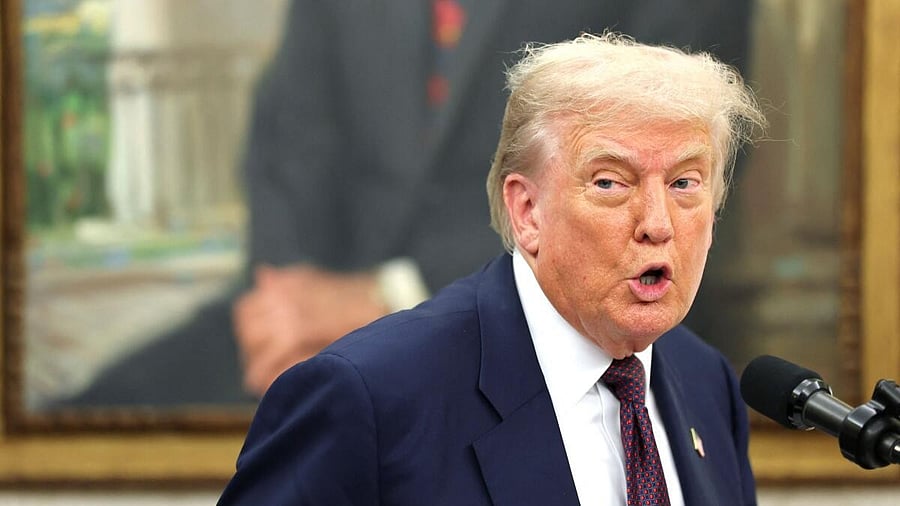
US President Donald Trump
Credit: Reuters Photo
New Delhi: After weeks of speculation and frantic negotiations for a trade deal the United States on Thursday imposed the first tranche of 25% tariff on the import of Indian goods, a move that forced traders across sectors from textiles to gems and jewellery to auto components to halt shipments to the world’s largest consuming country.
While the so-called reciprocal tariff on India along with several other countries came into effect at 12:01 a.m. EDT (0401 GMT) on August 7, US President Donald Trump has announced an additional 25% tariff on India as ‘penalty’ for continued purchase of Russian crude.
The additional 25% tariff will come into effect from August 27. This will take the total tariff on Indian goods in the US to 50%, among the highest.
“It’s midnight! Billions of dollars in tariffs are now flowing into the United States of America,” Trump said in a post of Truth Social.
US Commerce Secretary Howard Lutnick said America’s monthly revenue collection from tariffs is estimated to jump to $50 billion after the imposition of new tariffs from $30 billion last month.
The new tariffs imposed by the US are in the range of 10% to 50%. India is among the worst hit.
Industry bodies said the new tariffs have made India’s exports to the US unviable.
“This is a huge setback to the labour-intensive apparel export industry. There is no way the industry can absorb this. I am sure the government also realizes that this unreasonable increase in tariff will sound the death knell for the Micro and Medium apparel industry, especially those who majorly sell to the US market, unless the Government of India steps in with direct fiscal support to the industry,” said Sudhir Sekhri, chairman, Apparel Export Promotion Council (AEPC).
Manoranjan Sharma, Chief Economist, Infomerics Ratings, said the US tariffs will severely hit sectors such as drugs and pharmaceuticals, textiles, electricals and electronics and gems & jewellery.
Despite the imposition of unilateral tariffs by the Trump administration, India Inc remains hopeful for a trade deal between New Delhi and Washington.
“The additional duty, above the current 25%, will take effect in 21 days, suggesting that the decision leaves room for negotiations. The US is the top market for Indian engineering goods, and we hope that the ongoing trade negotiations for an interim deal will be finalised sooner rather than later,” said Pankaj Chadha, Chairman, EEPC India.
The Automotive Component Manufacturers Association (ACMA) called for continued dialogue between the two countries to work out a solution.
"We appreciate the proactive stance of the Government of India in addressing the issue and remain hopeful that bilateral engagement will lead to constructive outcomes," said Shradha Suri Marwah, President, ACMA.